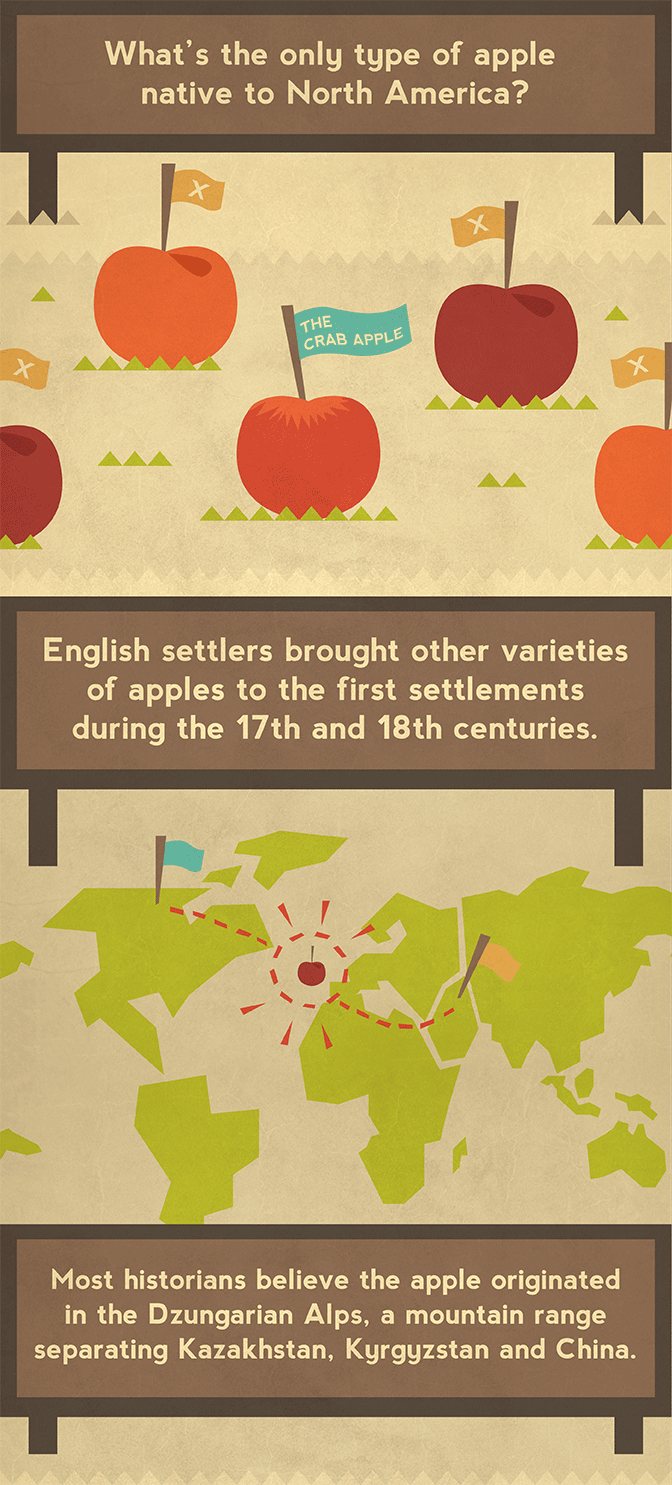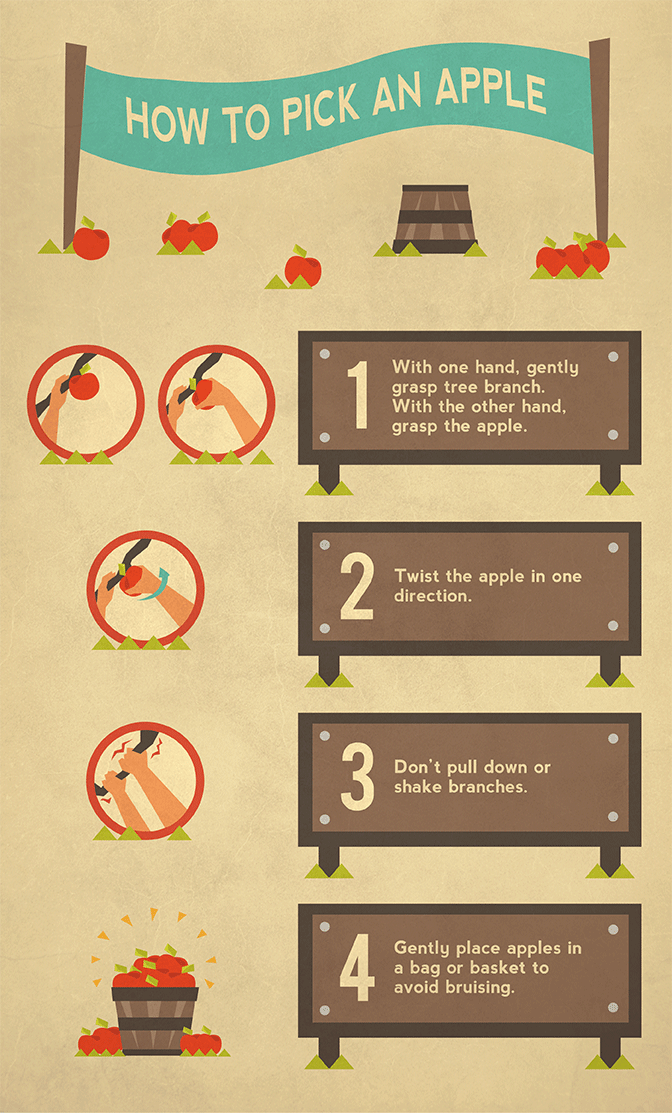The Ultimate Guide to Apple Picking
The crunch of fallen leaves, muted blooms of mums, and flickering lights of carved jack-o-lanterns are all autumn mainstays. The abundance of apples is also another welcome sign of fall. Although apples are available year-round, most of the apple crop matures during late summer and early fall. That’s when you’ll find a wider range of varieties to choose from at the grocery store, as well as pick-your-own orchards that offer the ability to sample (and take home) as many fresh apples as you like.
Although there are about 7,500 of varieties of apples, most pick-your-own orchards have a smaller sampling that they grow.http://urbanext.illinois.edu/apples/facts.cfm We’ve narrowed down some of the most popular choices plus key characteristics, how flavors differ, and which apple types work best in baked goods or just for plain snacking. You’ll also find helpful ways to get the most out of your experience when you visit an orchard. Now for the hard part: which apple to eat first?

Urban Orchard: How to Pick the Best Apples at the Grocery Store
There’s nothing more disappointing than opening up a bag of apples to find bruised, battered, and soft fruit. Avoid that dismay and look for these characteristics for the perfect apple every time.
- Firm
- Fragrant
- Bruise- and nick-free

Step Outside: How to Pick the Best Apples at the Orchard
Most pick-your-own orchards have some variation of the same routine: apples are available pre-picked, or you can pick your own, mixing and matching various types and perhaps trying something new. Although some of the same guidelines apply for choosing apples at the orchard as they do at the store, here are a few more tips that can help you bring home the best fruit possible.
- Choose fruit that’s firm and free of nicks and bruises.
- Colors vary on apple types and may not indicate ripeness. The orchard operator should be able to tell you which apples are at their peak.
- The apples nearest the outside of the tree are the ones that ripen first. If a variety is at peak ripening time, start there for the best ready-to-eat apples.
- Picked apples do not ripen more once they are removed from the branch.
- To pick an apple off the tree perfectly, rotate the fruit upwards and twist. Don’t pull down or straight, and never shake branches.

Quick Tip: In general, the firmer the apple, the more starch, and the better the fruit will hold up when cooked.
Take Care of Your Haul: How to Store Fresh Apples
For a day or two, fresh apples may be left on the counter at room temperature. But if you have more apples than you’ll use in that time (or want to save them for future eating or baking) store them in the fridge. Keep apples in a separate compartment because they give off a gas that hastens the ripening of other vegetables.http://www.vegetariantimes.com/article/spoiled-rotten-how-to-store-fruits-and-vegetables/ If you have cool basement storage, you can also store apples there but place them in a different spot than potatoes, which can cause early spoilage of apples.
Want to have a few apples for wintertime baking? Simply slice apples and freeze in a single layer on a cookie sheet. Once completely frozen, place the apple slices in a freezer-safe plastic container or freezer bag.
Should You Really Eat an Apple a Day?
In short, it doesn’t hurt. Here are the health benefits you’ll reap by adding a fresh one to your daily meals or snacks.
- Apples are relatively low in calories. An average serving size for an apple is only about 65 calories.http://nutritiondata.self.com/facts/fruits-and-fruit-juices/1809/2
- A single small apple provides one serving of fruit toward your recommended daily allowance.http://www.choosemyplate.gov/food-groups/fruits_counts_table.html
- Apples have lots of tummy-friendly soluble fiber (about four grams), which has been shown to lower cholesterol.http://www.mayoclinic.org/healthy-living/nutrition-and-healthy-eating/in-depth/high-fiber-foods/art-20050948
- Naturally sweet apples may satisfy sugar cravings without processed ingredients.
- A single apple offers a good chunk – about 10 percent – of the daily recommended amount of vitamin C.http://nutritiondata.self.com/facts/fruits-and-fruit-juices/1809/2
- The Iowa Women’s Health Study, which followed more than 34,000 women for 20 years, associated apples with a lower risk of death from both coronary heart disease and cardiovascular disease.http://www.eatingwell.com/nutrition_health/nutrition_news_information/5_health_benefits_of_an_apple
- Apples are rich in phytochemicals, antioxidants, and flavonoids, and may be associated with a reduced risk of cancer, asthma, diabetes, and cardiovascular disease.http://www.ncbi.nlm.nih.gov/pubmed/15140261
- Higher fruit and vegetable intake can lead to better overall health – apples have been shown to be a factor in the reduced risk of Alzheimer’s as well as improved weight management.http://www.ncbi.nlm.nih.gov/pubmed/22332082
Embed the article on your site

